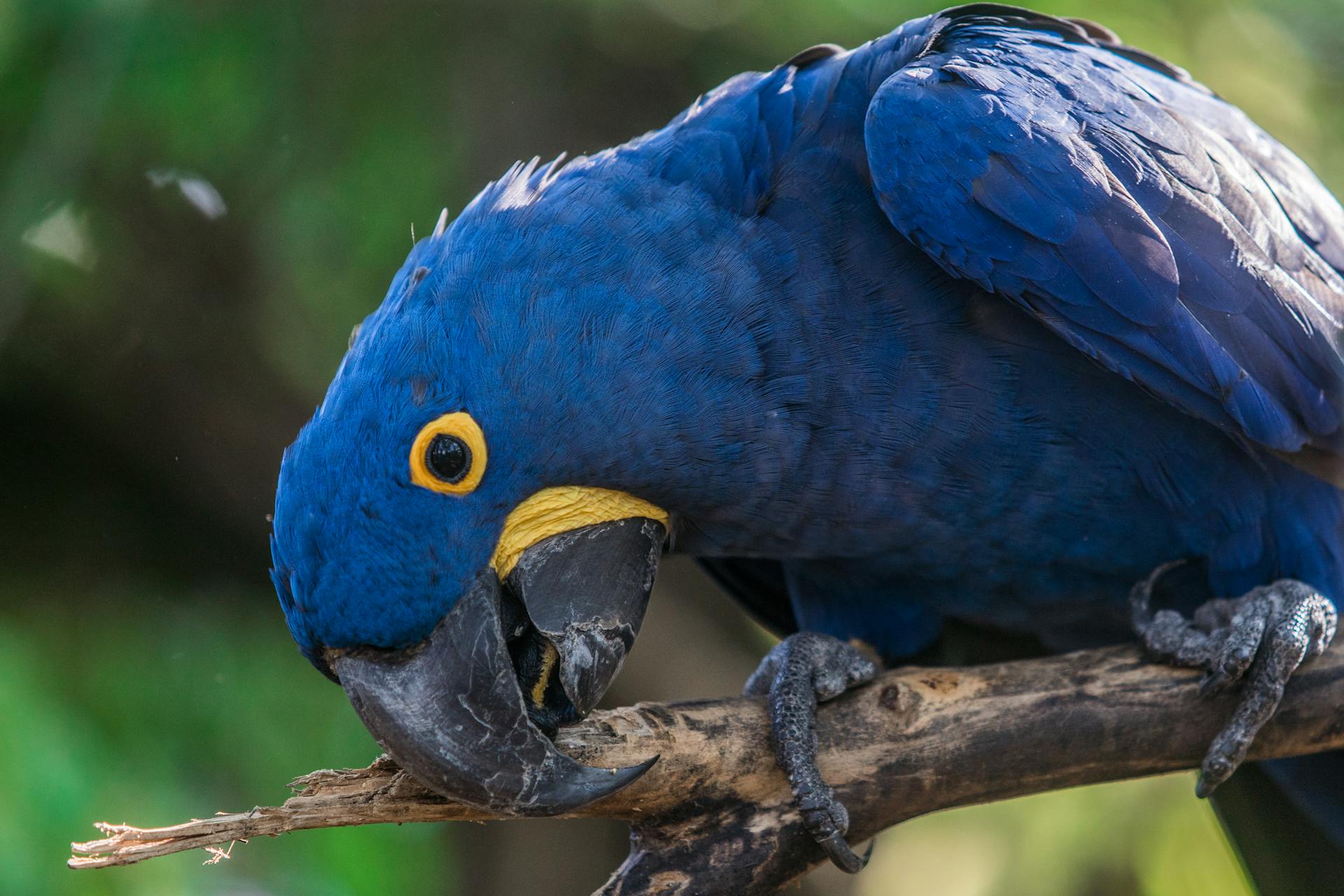Lear’s Macaws mate for life, and many pairs stay together for several years before breeding.
Like the Red-fronted Macaw, which inhabits similar arid habitats in Bolivia, Lear’s Macaw roosts and nests in fissures, caves, and cliff-side ledges within its range. Lear’s Macaws roost in loose colonies, with three to four birds sharing a space, but during the nesting season, mated pairs leave the larger group to set up their nests. A pair will excavate a crevice, or enlarge an existing one, by softening the sandstone with their saliva, then scraping the material away with beaks and feet.
Breeding in captivity is challenging. They typically lay 2-3 eggs per clutch, with an incubation period of about 28-30 days. Chicks usually fledge around three months old. In the wild, Lear’s Macaws typically nest in natural tree cavities high above the ground to protect from predators.
During breeding, Lear’s Macaws are highly sensitive to environmental changes, and any slight disturbance can cause breeding failure. Thus, a quiet, stable, and disturbance-free environment is required for successful breeding in captivity. Breeding nest boxes need to be large and deep, lined with soft materials like wood shavings or bark to mimic natural tree cavities.
During the breeding period, the female incubates the eggs while the male forages and protects the nest. After hatching, both parents participate in feeding until the chicks can eat independently. Chicks usually start leaving the nest around 12 weeks old but remain dependent on their parents for several months.

